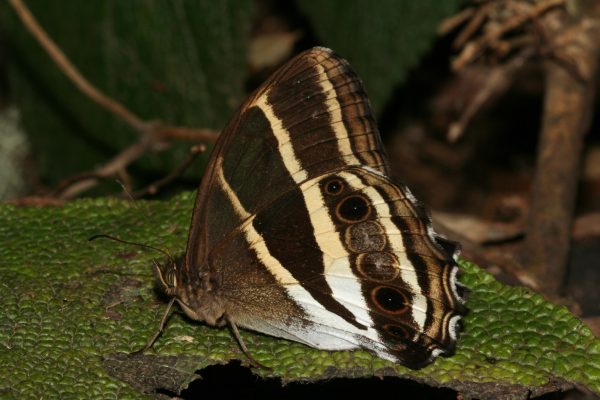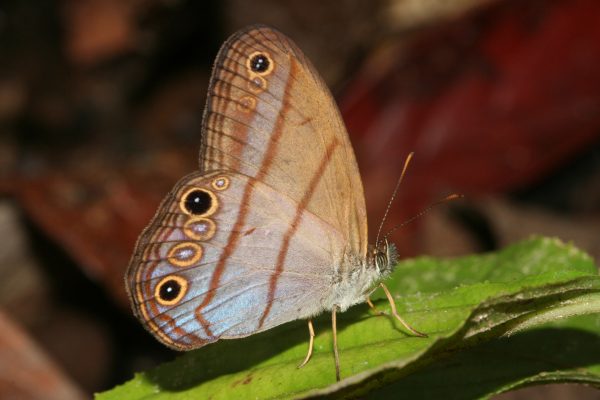Florida Museum of Natural History scientists have received a three-year, $458,104 National Science Foundation grant to research a common, but often misidentified, butterfly group.

Florida Museum photo by Keith Willmott
The diverse subtribe Euptychiina is found throughout the Americas, with most species occurring in grasslands and forests from the U.S. to Argentina. Its classification, however, is highly disorganized. Recent research shows at least 20 percent of the group’s species have no scientific name and about 65 percent of the genera are invalid. Museum collections serve many important roles, including helping scientists better understand where species occur and how the environment changes over time.
With hundreds of thousands of Euptychiina specimens stored in museum collections worldwide, the group has great potential research value, but nearly half of the more than 400 species in the group are impossible to confidently identify, said principal investigator Keith Willmott, associate curator of Lepidoptera at the Florida Museum.
“We have about 14,000 unidentifiable Euptychiina specimens just in our museum,” Willmott said. “That’s a pretty sizeable chunk of the collection and it’s a similar situation in all other museums. Almost anyone who does fieldwork in the Neotropics will end up collecting Euptychiina specimens, so a major goal of the study is to figure out which characteristics are useful to diagnose species and which are just variable, to provide a guide to anyone attempting to identify these butterflies.”

Florida Museum photo by Keith Willmott
Researchers at the Florida Museum’s McGuire Center of Lepidoptera and Biodiversity, along with collaborators from the U.S., South America and Europe, will use genetic data and analysis of physical characteristics to define and classify species, build phylogenies, investigate what factors control species distributions and examine how changing land use and climate are likely to affect the group.
Ranging from the size of a thumbnail to about 5 inches in wingspan, the butterflies are generally brown with a series of eyespots on their underwings, but some species are white or iridescent blue. The first Euptychiina species was described in 1767 and the only time scientists attempted to revise the classification of the entire group was about a century ago, Willmott said. Some specimens that look completely different belong to a single, highly variable species, while other species may outwardly look almost identical and show clear genetic differences, Willmott said.
“The biology of these butterflies is also poorly studied,” Willmott said. “The caterpillars mostly feed on grasses and bamboo, yet they are highly diverse in rain forests, which is somewhat mysterious. With many closely related species having similar wing patterns and living in the same place, it’s not yet clear what factors have been important in the diversification of the group.”
Researchers will allocate some of the funding to develop a website with publicly accessible biological data, images and publications about the subtribe Euptychiina, in addition to publishing studies summarizing knowledge of the most problematic genera. The group is potentially useful for a variety of studies because of its diversity and abundance, and a reliable classification coupled with identification tools will help researchers unlock the information available in collections as well as undertake new field studies.
Scientists also plan to curate and study specimens at multiple museums, as well as conduct fieldwork in Brazil, Ecuador, French Guiana and Peru.
“It’s remarkable that such a large and commonly encountered animal group should have so many species that are impossible to identify,” Willmott said. “We’re hoping to change that by the end of this project.”
Co-principal investigators include Jacqueline Miller and Akito Kawahara of the museum’s McGuire Center, and André Freitas at the Universidade de Campinas, Brazil.
Learn more about the McGuire Center for Lepidoptera & Biodiversity at the Florida Museum.